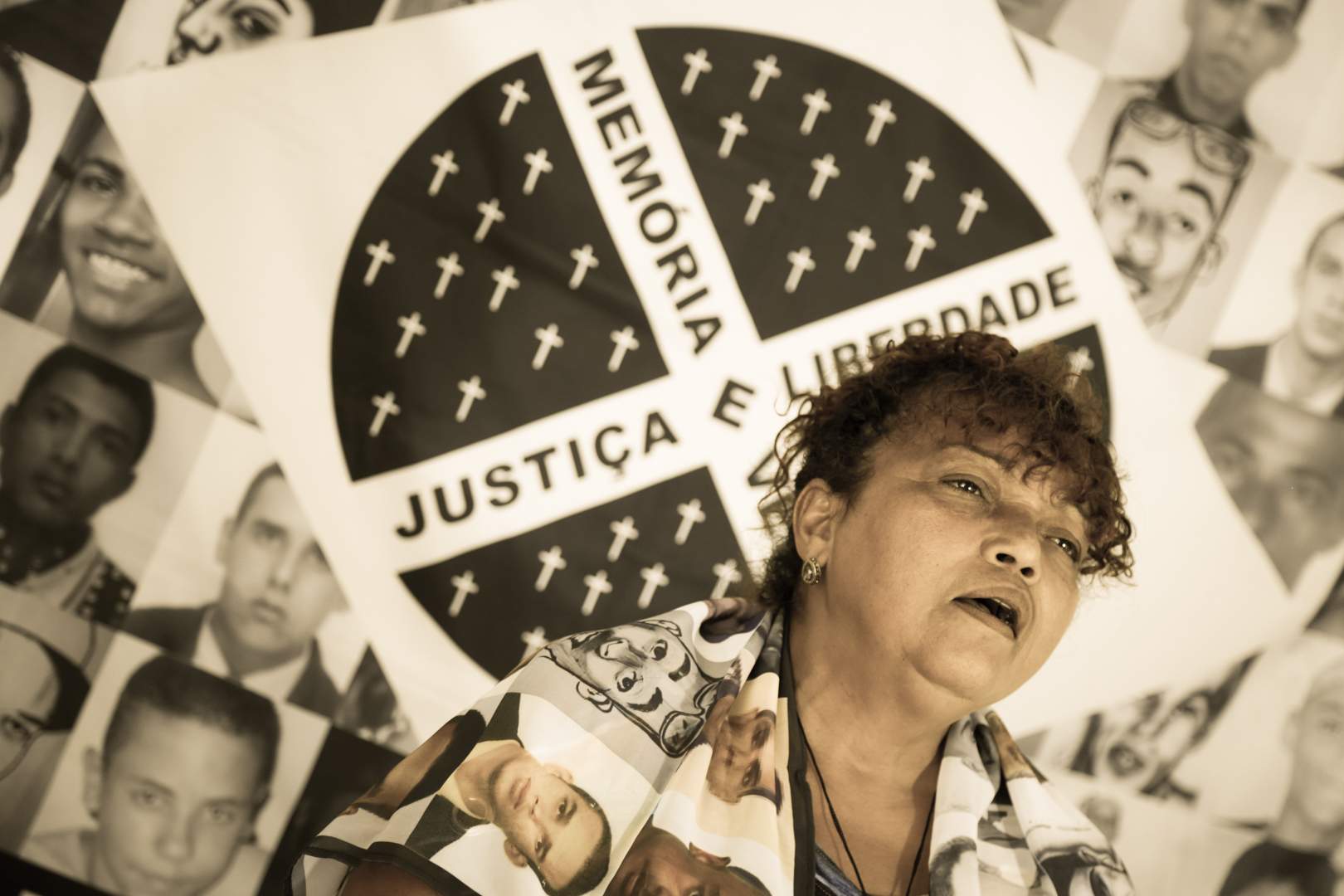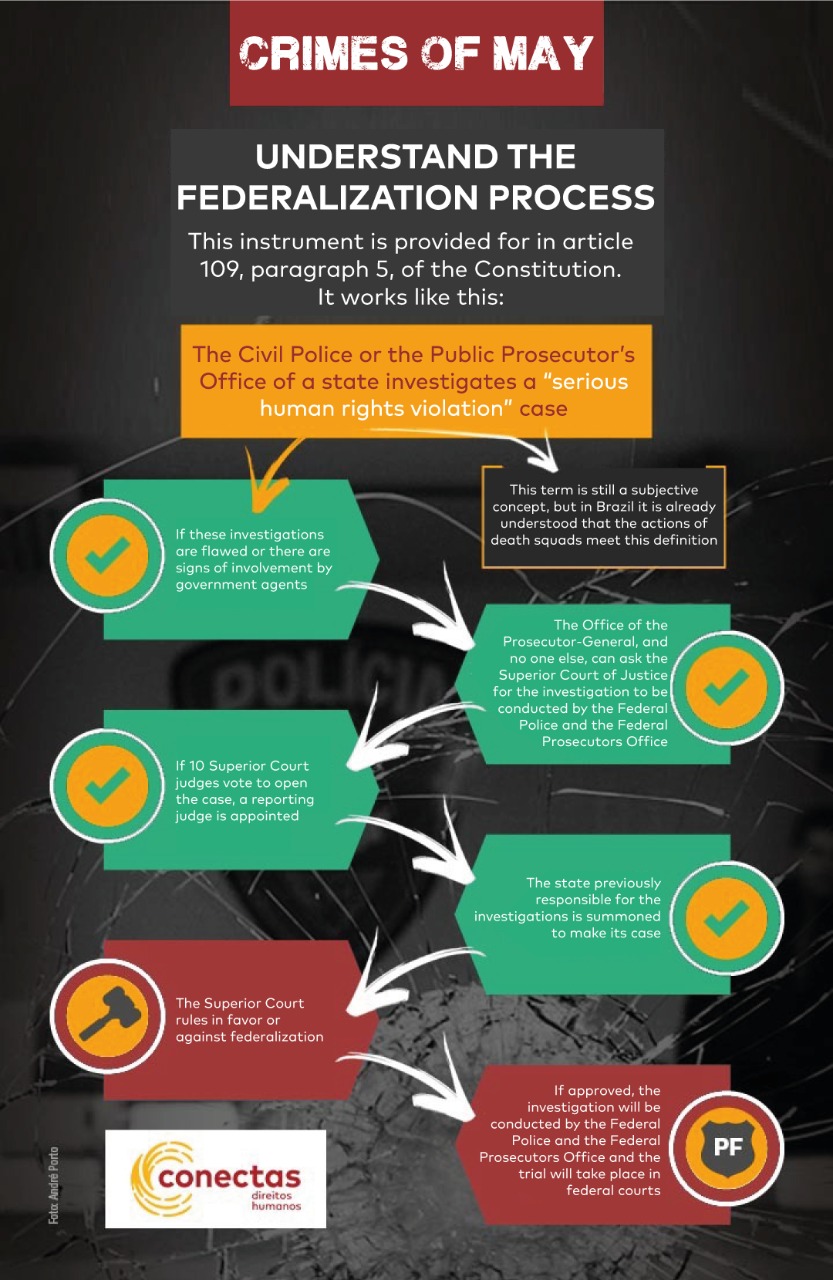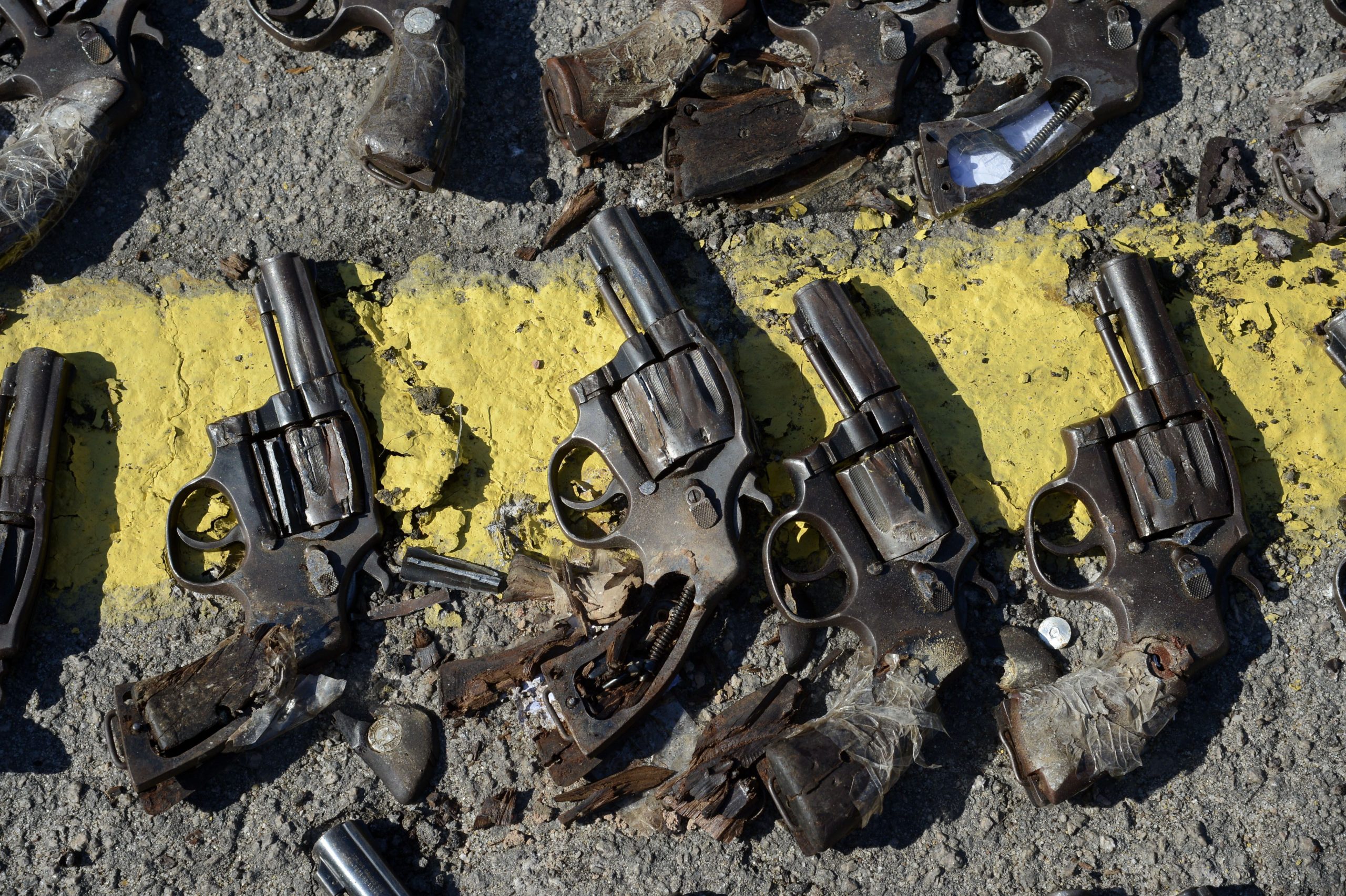What is stopping the ‘Crimes of May’ from being solved?
In 14 years, the public authorities have been incapable of shedding light on the hundreds of executions carried out by death squads in the urban outskirts of São Paulo
 Dona Débora, leader of the Mothers of May Movement, in an interview with Conectas
on the Crimes of May. (Photo: João Paulo Brito/Conectas)
Dona Débora, leader of the Mothers of May Movement, in an interview with Conectas
on the Crimes of May. (Photo: João Paulo Brito/Conectas)
Fourteen years ago, while the country was celebrating Mother’s Day, the urban outskirts of São Paulo experienced a wave of terror and unprecedented violence. More than 500 people, the majority young and black, were murdered between 12-21 May 2006 in the episode that has become known as the Crimes of May. Most of the
victims were killed at close range by death squads – hooded, heavily armed men in vehicles without license plates.
Indifference, flaws and negligence in the investigations conducted by the Civil and Military police, coupled with inaction by the São Paulo Public Prosecutor’s Office – the body responsible for the external oversight of the state’s public security forces – led to the case being dropped and impunity for nearly all the crimes.
Relatives of the victims, who for more than a decade have lived without their murdered relatives, are fighting for answers on the circumstances of the deaths and for the investigations to be reopened. Many of the mothers who lost their children have since died after suffering long spells of depression and sadness.
The investigations into the deaths were never concluded and, in 2009, Conectas asked the Office of the Prosecutor-General to federalize one of the most symbolic cases of the Crimes of May: the Parque Bristol shooting. The transfer of the case to the federal level will allow investigations to be reopened and carried out by independent
experts from the Federal Prosecutor’s Office and the Federal Police.
Only in May 2016, ten years after the killings, did the then Prosecutor-General Rodrigo Janot accept the request and present the federalization case to the Superior Court of Justice. Four years have since passed and the Court has still not taken the case to trial.
From 2009 to 2016, Conectas and the families of the victims denounced the case to the IACHR (Inter-American Commission on Human Rights of the Organization of American States), alleging that the Brazilian State was in violation of the American Convention on Human Rights, which was ratified by the country in 1992.
The Crimes of May should once again be the subject of debate at a new hearing at the next session of the Inter-American Commission in June this year. The Brazilian government should explain why it is incapable of providing answers on the perpetrators of the crimes.

Indifference and inaction
One of the main studies published on the Crimes of May, “São Paulo under Extortion (2011)”, conducted by the International Human Rights Clinic at Harvard Law School and by Justiça Global, found that the Civil Police Homicide Department solved, in full or in part, 85.7% (12 out of 14) of the cases involving attacks agains government agents that occurred between 12-21 May 2006. However, only 12.9% (4 of 31) of the crimes involving civilians in suspected attacks by death squads were properly investigated.
Of the hundreds of murders that occurred between these dates, only two cases led to the conviction of military police officers, one of whom gave himself up voluntarily.
Information gathered over the years indicates that basic procedures stopped being followed over the course of the investigations, such as hearing the eyewitnesses mentioned in the police reports and connecting the murders.
In addition, according to reports, military police officers in various cases failed to preserve the crime scenes, a key factor in enabling adequate forensic investigations. A number of witnesses have also reported that before the forensic teams turned up, the police officers removed the cartridges from the streets to dispose of them.
New research conducted by CAAF/Unifesp (Forensic Archeology and Anthropology Center of the Federal University of São Paulo), entitled “State Violence in Brazil: an analysis of the Crimes of May 2006”, presents an analysis of the autopsy reports of the people killed by firearms between 12-21 May 2006. The diagnosis came from the São Paulo State Public Security Crisis Special Commission, which was created to investigate the crimes, and it revealed that most of the shots were fired at short range at vital areas of the body – such as the torso and head, and predominantly from above.
These characteristics, proven from the examination of 124 autopsy reports, present strong signs of executions. According to the Commission’s report, in situations of confrontation with the police, there would be a larger spread of entry wounds and shots to both the upper and lower body.
Most of the cases, however, were recorded as “resistance followed by death”, which is the term used by the authorities to describe deaths of suspects who allegedly died in confrontation with the police.
Families and independent studies have shown that there was a systematic attempt to criminalize innocent people during that 10-day period.


